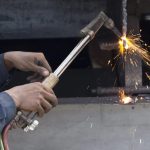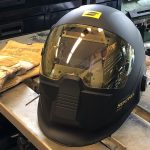Welding can be one of the most invaluable skills you can learn, whether that’s for working on DIY projects or as a contractor. The ability to fuse two pieces of metal is useful in countless scenarios, and it’s a skill you can learn on your own. Moreover, there aren’t many things you need to kick-start as a welder – you just need a welder and some basic welding equipment. The internet has made it easy for anyone interested in sourcing guides on how to start welding, and looking up places where they can buy welding equipment as well.
That being said, having some basic understanding before you buy welding equipment can be essential in making the right purchase, which will give you the best value for the money you spend on it. Learning about the different type of welders will help you be more efficient and produce better welding results. The three different types of welders are TIG, MIG and arc/stick.
TIG Welders
TIG welding is the most aesthetically pleasing and cleanest welding style. It’s ideal for welding thin metals because it’s a very accurate welding technique that requires no cleaning afterward. TIG welders use plasma to join the metals together and argon to protect the weld from contaminants. However, TIG welding is a rather slow process, but you get quality, accurate and aesthetically pleasing results. TIG welding requires quite a lot of practice to master, but if you’re dedicated it’s totally worth it.
MIG Welders
MIG welders are the most beginner-friendly welding machines as they’re easy to learn, and are very quick. Moreover, they’re also clean and aesthetically pleasing while producing powerful joints even on thin metals. However, they don’t perform well in windy conditions and on rusty and dirty metal. But there are flux-cored welders which are an iteration of MIG welders and those are much better at joining rusty and dirty metals together.
Arc/Stick Welders
Arc/Stick welding is the most commonly used welding style by most welders. The main reason for that is the fact that they are capable of fusing even the thickest of metals relatively easy, which can be very appreciated in most industrial settings. The second reason is that they’re incredibly stable, and can easily work their way around dirt and dust and even windy environments. However, as is the case with other welding techniques, arc/stick welding also has disadvantages. For starters, it’s difficult to learn because the rods need to be changed often, and they’re high-maintenance. Moreover, they produce a lot of sparks, so it’s easy to get burned as a beginner. And lastly, the metal weld needs to be polished and cleaned after the welding is performed.






Comments are closed.